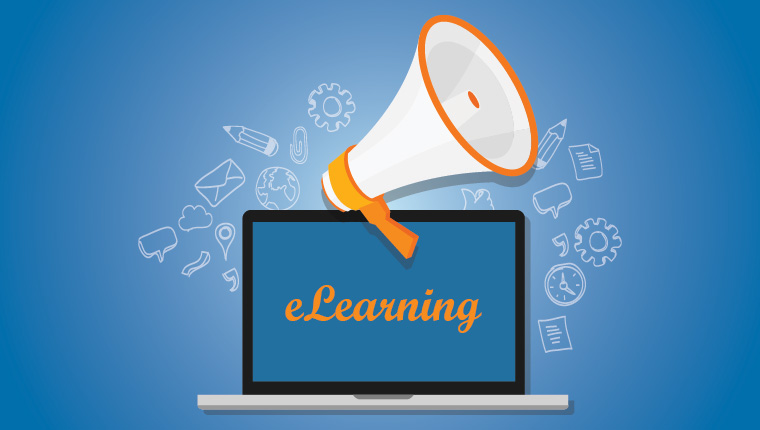eLearning Marketing: 7 Tips for L&D to Turn into Marketers
L&D teams must plan for eLearning marketing. Check these tips on eLearning marketing to help L&D turn marketers and promote eLearning programs.

The importance of Learning and Development (L&D) in an organization can’t be stressed enough, as it’s a key driver for employee engagement, productivity, and retention. You already know that and have invested sensibly in online training programs. But what happens when your employees are blissfully unaware of the learning opportunities available to them? Now that’s a big hurdle and looks like it would require some serious eLearning marketing. So, should L&D turn marketeers? Absolutely, and with good reason. When you market your eLearning courses to internal customers (i.e. employees), you are increasing the odds of improving learning culture in the organization.
Tips for eLearning Marketing
- Communicate over e-mail
- Customize marketing content
- Get creative with marketing campaigns
- Let managers and leadership teams champion eLearning
- Think beyond ordinary branding
- Make use of marketing analytics
- Leverage the company’s intranet
Why is eLearning Marketing Required?
For organizations that think having an LMS packed with interesting eLearning programs is enough to engage employees, it simply isn’t enough. Most often, learning takes a backseat because of professional as well as personal commitments of employees. So, though you have what employees need, they don’t know it yet and that’s why eLearning marketing is essential.
Marketing and L&D might look like departments that do not have much in common. But marketing eLearning courses is crucial if you need to promote eLearning within the organization.
7 Tips for eLearning Marketing
According to the 2019 Workplace Learning Report, talent developers spend only 15% of their time promoting learning for employee engagement. It’s time to amp up the volume of eLearning marketing. Here are some tips to help L&D teams turn into marketers.
1. Communicate Over E-mail – It Works!
While it’s true that messages from managers and leadership teams on learning have the biggest impact on learners, the reality is that these messages do not reach a majority of learners. In fact, 69% of talent developers leverage leadership and managers to promote learning, but only 46% of employees discover learning programs through the leadership or managers (2019 Workplace Learning Report).
On the other hand, something that’s used every day at the workplace, the humble e-mail offers tremendous potential for eLearning marketing. The email can become the strongest tool when it comes to marketing eLearning programs. 65% of talent developers use email marketing to promote learning and it has resulted in 61% employees discovering learning programs. The numbers are definitely much more than the results from leveraging managers to influence learning, and that’s proof enough that e-mail works.
2. Customize Marketing Content to Match Your Audience
Sure, eLearning is designed for your target audience and focuses on how relevant it can be to your target audience. But are your eLearning marketing efforts focused on your audience? Learners will not complete an eLearning course just because you’ve sent them an email about it.
You already know the target audience for your eLearning course. It could be the sales team, customer service, managers, new hires, and so on. Here’s how you can focus your eLearning marketing strategy to target a niche audience:
- Build your marketing content around the pain points of learners so that learners see value in the training program. This is certainly going to build curiosity as employees would love to know how the training program can help them.
- Segment your target audience according to common attributes they share. Customize content to create targeted messages. For example, consider a code of conduct training that’s to be taken by all employees – the demographics indicate that your employee workforce includes a mix of Gen X, Y and Z. Different demographics of learners prefer different types of content, and you could use these as pointers to build your eLearning marketing strategy.
| Learner Demographics | Preferred Types of Content |
| Gen X |
Are okay with going through longer content, provided it is useful |
| Gen Y |
|
| Gen Z |
|
3. Get Creative with Your eLearning Marketing Campaigns
Investing time in designing creative campaigns can give learning awareness a boost. You could consider creating seasonal campaigns that are centered on an event or a celebration. For instance, you could try a ‘Back to School’ eLearning Campaign or Learning on ‘Black Friday’ or ‘Holiday Season Learning’.
Try a competition – pit different departments against one another and get them to complete training programs. Maybe a story or a picture of team members from the winning department can be featured on your intranet.
Digital signage has caught on in a big way. So why not make use of the LCD and LED screens in office to stream videos, images, or catchy slogans to market your eLearning course.
4. Get Managers and Leadership to Promote eLearning
Involving managers and leadership teams in marketing online learning can have a big impact. A simple video of your CEO sharing thoughts on why a particular eLearning course is important is sure to catch the attention of employees.
Here’s a short video where the COO of Econet Wireless champions online learning.
As per the 2019 Workplace Learning Report, 75% of employees say they would complete a training program that’s assigned by their manager. Isn’t that reason enough to involve them in eLearning marketing?
5. Go Beyond the Attractive Logo and Catchy Tagline of Branding
Most organizations follow branding guidelines for their eLearning courses as well as eLearning marketing (your promotional emails, flyers, videos, presentations must follow branding guidelines). The brand reflects the company’s personality. But branding is not only about incorporating an attractive logo, a tagline, or following a visual style guide. In your eLearning marketing campaign:
- Highlight the L&D strategies followed in your organization.
- Include the benefits of the eLearning program to learners.
- Use a carefully crafted tone as it reflects your brand. For example, Nike follows a motivating and authoritative tone, and this is reflected in their marketing content.
6. Leverage Marketing Analytics
You would not need to go all out and use extensive marketing analytics to evaluate the success of eLearning promotions within the organization. But you can certainly follow a few rules. Your marketing campaign for eLearning must include a measurable goal. For instance, if the call to action is to get employees to register for an online training program, using digital marketing tools can help you track the number of employees who have clicked the registration link or shared it with peers.
7. Make Use of the Company’s Intranet
Your organization’s intranet is one of the communication tools to use in your eLearning marketing strategy. Why not utilize the intranet to share what’s new in the L&D space, tips for learning effectively, links to interesting training programs, or to share newsletters highlighting the best online training resources available for learners to access.
Marketing online training through the intranet not only helps build a learning culture in the organization but also encourages employees to take charge of their learning experiences and be responsible for their self-development.
Did you know that most learning at the workplace happens over the first three working days of the week? (2019 Workplace Learning Report). That’s a cue. Try sending your emails and promotional campaigns on eLearning marketing right at the beginning of the week to increase impact. Think like a marketer, spend some time creating a buzz about your eLearning programs, and get the learner engagement you expect for your online training programs.





